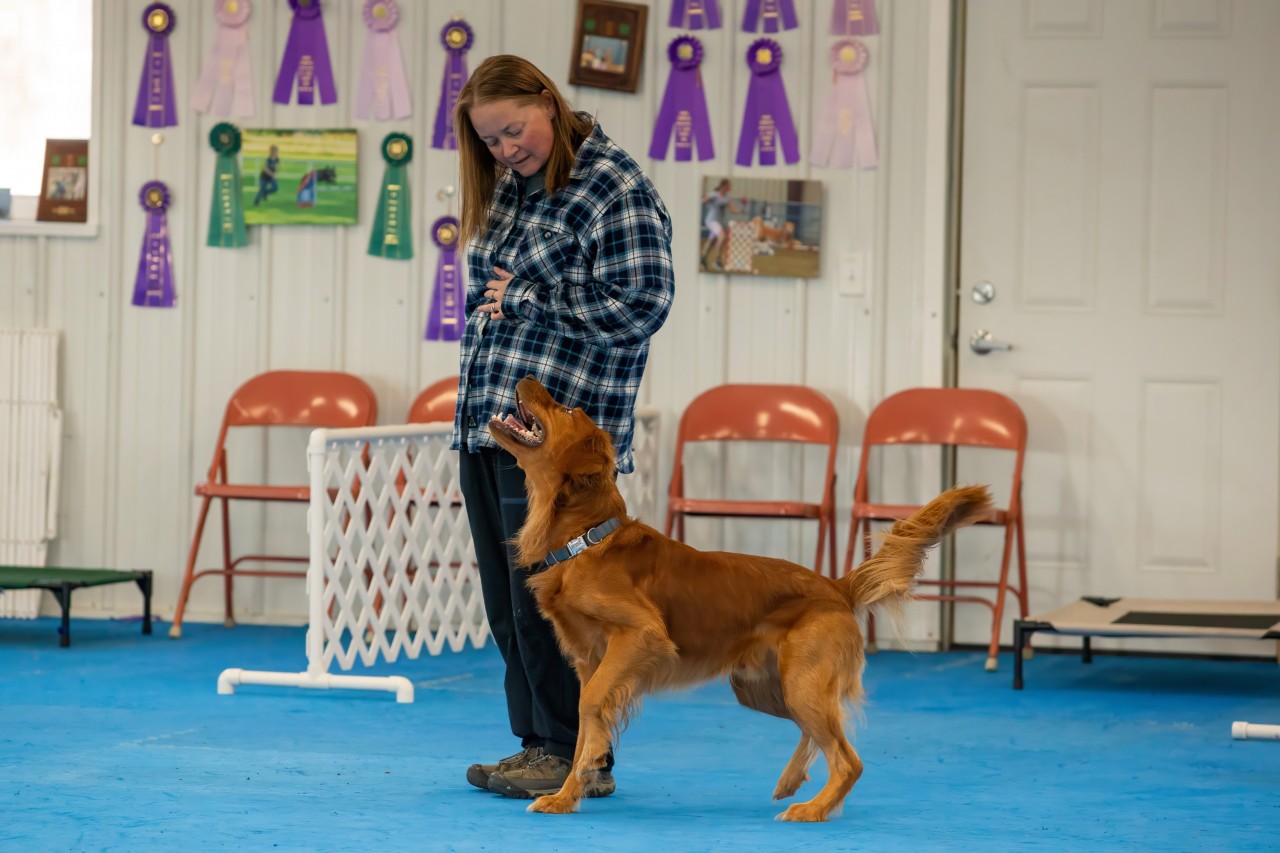Handling Heeling Mistakes: How to Use Resets to Keep Training Clean and Productive
If you're working on heelwork, you're going to encounter mistakes. Crooked sits, forging, lagging, loss of attention — they're all part of the process. The key to handling heeling mistakes is recognizing that errors aren't failure; they're feedback. When a dog makes a mistake during heeling, it usually means the criteria were too high, the environment too challenging, or the dog wasn't prepared for that level of difficulty.
Instead of pushing through or correcting the dog, use mistakes as information. Occasional blips are expected. But if mistakes start happening repeatedly, that's your cue to pause and reevaluate your training plan. Backing up a step or two is not a setback — it's how you build clarity.
What Is a Reset?
A reset is a cheerful, low-pressure way to help your dog try again. A reset interrupts the pattern, gives the dog a fresh start, and keeps training upbeat. It's not a correction, cue, or punishment — it's simply a do-over.
A reset looks like this:
- Handler notices the mistake
- In a happy tone: "Oops, let's try that again!"
- Handler takes a small step back or to the side
- Dog reorients and returns to heel with renewed focus
Resets allow you to maintain momentum without making the dog wrong.
When to Use a Reset (and When Not To)
Resets are ideal for:
- Minor mistakes
- Attention blips
- Slight position errors (wide, crooked, forging, lagging)
Resets should NOT be used:
- Repeatedly in the same session
- To avoid adjusting your training plan
- When the dog is overwhelmed or confused
A good rule of thumb when handling heeling mistakes:
If you're resetting more than once or twice in a session, the challenge is too high. Reduce criteria.
Video Example — Reset With a Distraction
In this video, my daughter intentionally creates a distraction so you can see how a reset brings the dog back into focus:
Video Example — Resets in a Longer Heeling Pattern
Here's how resets look when used during a heeling sequence to maintain flow and engagement:
Why Resets Are So Effective For Heeling Mistakes
Resets work because they:
- Maintain a positive emotional state
- Give the dog a fast path back to success
- Prevent frustration and nagging from the handler
- Keep the training loop moving instead of stopping to diagnose
You don't need to stop training and analyze in the moment — the reset is the fix.
Key Takeaways
Handling heeling mistakes is simply part of the normal learning process, and those mistakes are valuable feedback that your training plan may need an adjustment. A reset should always feel like a cheerful do-over rather than any kind of correction, helping your dog feel safe and willing to try again. Use resets sparingly, though — if you find yourself resetting often, that's a sign your criteria are too high or unclear. When in doubt, simplify the picture and rebuild clarity so your dog understands what success looks like.
Confidence in heelwork doesn't come from preventing mistakes — it comes from responding to them thoughtfully.
By accepting you will be accessing a service provided by a third-party external to https://www.fenzidogsportsacademy.com/
